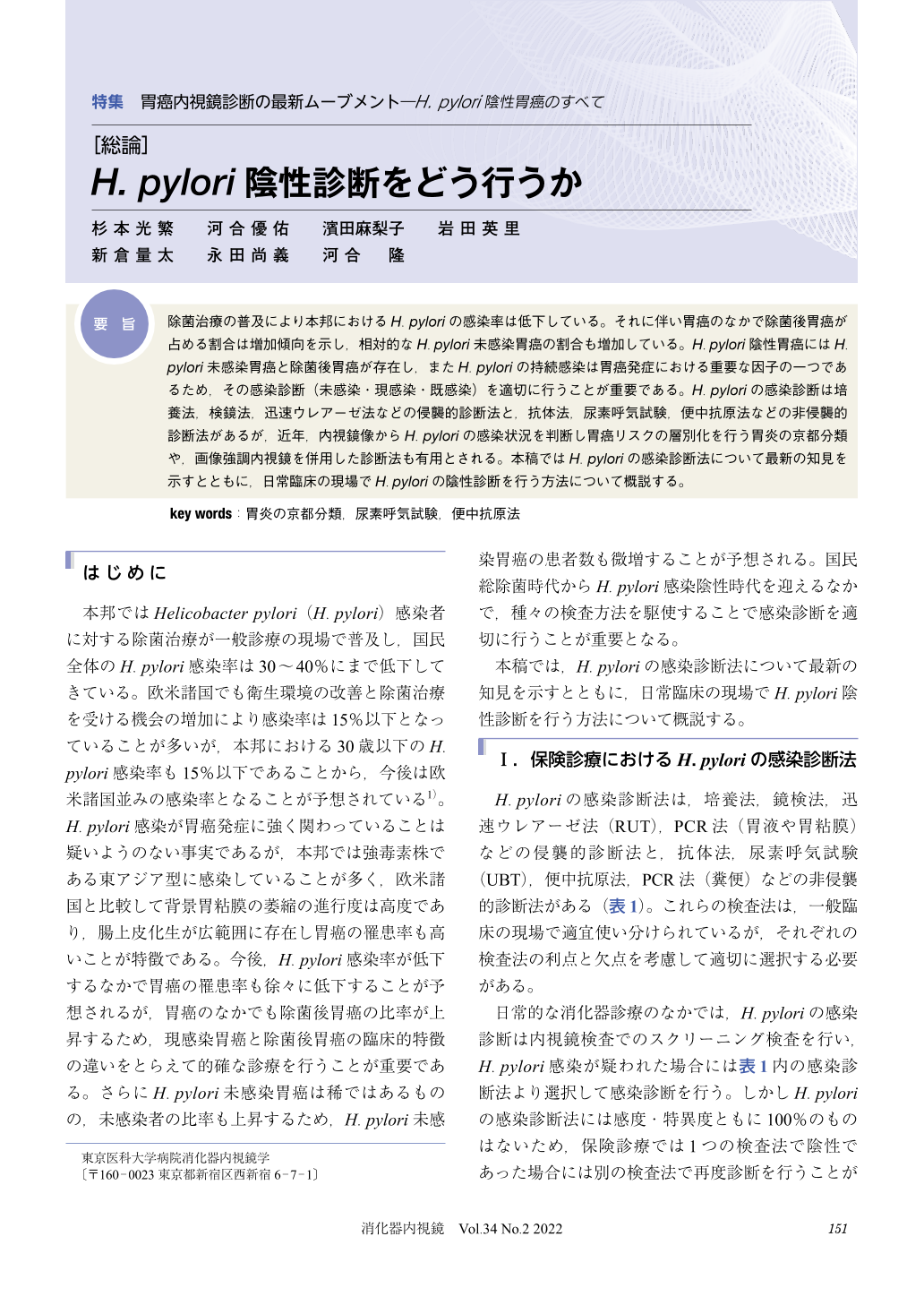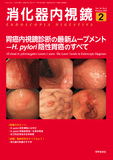Japanese
English
- 有料閲覧
- Abstract 文献概要
- 1ページ目 Look Inside
- 参考文献 Reference
要 旨
除菌治療の普及により本邦におけるH. pyloriの感染率は低下している。それに伴い胃癌のなかで除菌後胃癌が占める割合は増加傾向を示し,相対的なH. pylori未感染胃癌の割合も増加している。H. pylori陰性胃癌にはH. pylori未感染胃癌と除菌後胃癌が存在し,またH. pyloriの持続感染は胃癌発症における重要な因子の一つであるため,その感染診断(未感染・現感染・既感染)を適切に行うことが重要である。H. pyloriの感染診断は培養法,検鏡法,迅速ウレアーゼ法などの侵襲的診断法と,抗体法,尿素呼気試験,便中抗原法などの非侵襲的診断法があるが,近年,内視鏡像からH. pyloriの感染状況を判断し胃癌リスクの層別化を行う胃炎の京都分類や,画像強調内視鏡を併用した診断法も有用とされる。本稿ではH. pyloriの感染診断法について最新の知見を示すとともに,日常臨床の現場でH. pyloriの陰性診断を行う方法について概説する。
With the increased number of H. pylori eradication therapies, the infection rate has been decreasing in Japan. Although the rate of H. pylori-negative gastric cancer increases of patients with gastric cancer, H. pylori-negative gastric cancer can divide into two types: H. pylori-uninfected gastric cancer and post-eradicated gastric cancer. Because H. pylori infection is a major risk factor for gastric cancer development, it is necessary to correctly diagnose H. pylori infection. In general, H. pylori infection is detected by culture, histology, and rapid urease tests as invasive detection methods, and by antibodies, urea breath tests, and stool antigen tests as non-invasive methods. Recently, the Kyoto classification of gastritis shows the efficacy of evaluating infection status by characteristics for H. pylori infection, such as diffuse redness, mucosal edema, intestinal metaplasia, and atrophy. In this issue, we will show points to note about how to diagnose H. pylori infection, which is an important factor in the development of gastric cancer, and outline how to make a negative diagnosis of H. pylori.

© tokyo-igakusha.co.jp. All right reserved.


